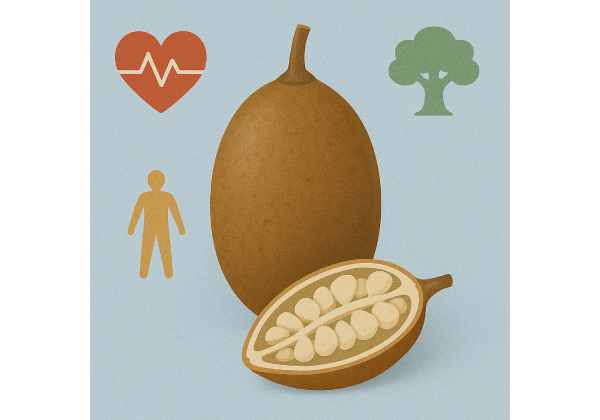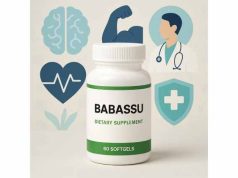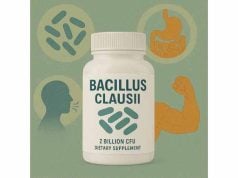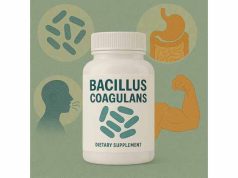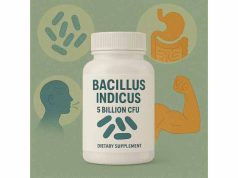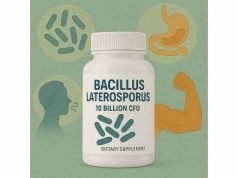Baobab fruit, often called the “superfruit from Africa,” is gaining worldwide attention for its remarkable nutritional content and array of health benefits. Derived from the iconic baobab tree, this fruit is packed with vitamin C, antioxidants, minerals, and fiber. Its tangy pulp is used traditionally for boosting energy, immunity, and digestive wellness. Modern science supports many of these uses, highlighting baobab fruit’s potential to regulate blood sugar, reduce inflammation, and promote skin health. Whether enjoyed as a powder, supplement, or natural food, baobab is emerging as a valuable addition to wellness routines. Discover its origins, benefits, safe dosage, and more below.
Key Takeaways
- Nutrient-Dense Superfruit: Baobab fruit offers a rare combination of vitamin C, fiber, antioxidants, and essential minerals.
- Gut & Immune Support: Prebiotic fiber and vitamin C content help strengthen digestion and immunity.
- Blood Sugar & Heart Health: Research shows baobab can help moderate glucose spikes and support cardiovascular wellness.
- Safe for Most People: Generally well-tolerated; appropriate dosages maximize benefits with minimal side effects.
- Versatile Uses: Can be incorporated into smoothies, supplements, or functional foods for daily health enhancement.
Table of Contents
- What is Baobab Fruit and How is it Used?
- The Nutritional Profile and Bioactive Compounds of Baobab Fruit
- Evidence-Based Benefits of Baobab Fruit for Health and Wellness
- Baobab Fruit Safety, Tolerability, and Potential Side Effects
- Proper Dosage, Usage Guidelines, and Timing for Baobab Fruit
- Frequently Asked Questions about Baobab Fruit
What is Baobab Fruit and How is it Used?
Baobab fruit is the edible product of Adansonia species, most notably Adansonia digitata, a majestic tree native to sub-Saharan Africa and also found in parts of Australia and the Middle East. Sometimes referred to as the “tree of life,” the baobab is deeply woven into the fabric of African traditional medicine and daily life, thanks to its longevity and the utility of all its parts—from leaves to bark, seeds, and fruit.
Physical Characteristics and Harvesting
The baobab fruit appears as a large, egg-shaped pod encased in a hard shell, filled with a dry, tangy, cream-colored pulp that surrounds black seeds. The pulp naturally dehydrates while hanging on the tree, making it shelf-stable and ideal for transport or storage. Local communities harvest the fruit during the dry season, collecting the pods either by hand or by shaking them from the branches.
Traditional Uses and Folklore
For centuries, baobab fruit pulp has served as a vital source of nutrition during lean seasons. In various African cultures, it is reconstituted into refreshing drinks, porridges, or fermented foods. The seeds are roasted for snacks or pressed to yield nutritious oil, while the leaves are cooked as vegetables or made into herbal teas. The fruit is also valued as a remedy for fevers, digestive issues, skin irritations, and general weakness.
Modern Applications
In recent decades, baobab has entered the global market as a superfood. The pulp is finely ground into a powder, making it easy to add to smoothies, energy bars, yogurts, juices, and dietary supplements. The powder’s naturally tart flavor and impressive nutrition profile have made it popular among health-conscious consumers seeking natural sources of vitamin C, antioxidants, and dietary fiber.
Supplement Forms
Baobab fruit is most commonly available as:
- Powder (pure or blended in “greens” supplements)
- Capsules or tablets (standardized for vitamin C or polyphenol content)
- Functional foods (bars, drinks, snack balls, etc.)
- Topical applications (oils and extracts for skin)
Unique Properties
One of baobab fruit’s distinguishing features is its ability to retain nutrients and resist spoilage in extreme environments. This natural preservation means it requires minimal processing and contains no additives or preservatives in its powdered form.
Environmental and Social Impact
Baobab is a sustainable crop, thriving without intensive irrigation or pesticides, and its wild harvesting supports rural economies, especially for women’s cooperatives across Africa. Purchasing certified, fair-trade baobab helps empower these communities and encourages environmental stewardship.
Summary
From its roots in African heritage to its modern “superfood” status, baobab fruit bridges the gap between traditional wisdom and contemporary nutrition. Its versatility, nutrient density, and positive social impact make it a standout supplement and ingredient.
The Nutritional Profile and Bioactive Compounds of Baobab Fruit
Baobab fruit is one of the most nutrient-dense foods found in nature. Its impressive array of vitamins, minerals, fiber, and unique plant compounds positions it as a true superfood, supporting multiple aspects of health. Let’s explore its nutrition and the bioactive elements that drive its benefits.
Macronutrients
Baobab pulp is notably low in fat and protein, but it’s rich in complex carbohydrates—especially dietary fiber, which comprises nearly 50% of its dry weight. This makes baobab a top choice for gut health, regularity, and satiety.
Micronutrients: A Standout Source of Vitamin C
- Vitamin C: Baobab is exceptionally high in vitamin C, with levels up to 10 times higher than oranges by weight. Just 10 grams of baobab powder can provide about one-third of an adult’s daily vitamin C requirement, essential for immune function, collagen production, and antioxidant defense.
- Minerals: Baobab contains potassium, magnesium, calcium, and iron in significant amounts, supporting muscle function, bone health, and energy production.
- Other Vitamins: Trace levels of B vitamins and vitamin A-like carotenoids add further nutritional value.
Prebiotic Fiber: Fuel for the Gut
Baobab’s unique soluble and insoluble fiber content acts as a prebiotic, selectively nourishing beneficial gut bacteria. This not only supports regularity but may also contribute to better metabolic and immune health.
Antioxidant Phytochemicals
- Polyphenols and Flavonoids: Baobab fruit is loaded with antioxidant compounds, especially flavonoids, proanthocyanidins, and tannins. These neutralize harmful free radicals, combat oxidative stress, and play a role in reducing inflammation throughout the body.
- Tartaric Acid: This compound gives baobab its tangy taste and may further support antioxidant activity.
Unique Bioactives
- Pectins: Natural gelling agents in baobab help regulate blood sugar and cholesterol.
- Saponins: Present in small amounts, saponins are thought to have cholesterol-lowering and immune-supporting properties.
- Organic Acids: Aid in mineral absorption and digestive health.
Low Glycemic Index
Despite its carbohydrate content, baobab fruit has a low glycemic index, meaning it has minimal impact on blood sugar when consumed in moderation—a benefit for people managing diabetes or metabolic syndrome.
Calorie Content and Suitability for Diets
- Naturally low in calories and sugar
- Gluten-free, vegan, paleo, and keto-friendly (in moderate serving sizes)
Purity and Minimal Processing
High-quality baobab powder is typically raw, unpasteurized, and contains no added sugar, artificial colors, or preservatives. Always check labels to confirm purity.
Summary Table: Baobab Fruit Powder (per 10g serving)
- Calories: ~25
- Vitamin C: 35–80 mg (30–90% DV)
- Fiber: 4–5 g
- Potassium: 200–300 mg
- Magnesium: 30–50 mg
- Calcium: 30–40 mg
Conclusion
With this powerhouse nutritional composition, baobab fruit powder stands out not just as a supplement, but as a natural food ingredient with measurable health benefits.
Evidence-Based Benefits of Baobab Fruit for Health and Wellness
Modern science is now confirming what traditional healers have known for generations: baobab fruit supports whole-body wellness. Let’s dive into the most studied and impactful health benefits of baobab fruit, focusing on those best supported by clinical research and traditional wisdom.
1. Immune Support and Antioxidant Defense
- Rich in Vitamin C: Baobab’s vitamin C content is a powerful ally for immune health, enhancing white blood cell function, supporting collagen formation for healthy skin and tissues, and fighting oxidative stress.
- Antioxidant Polyphenols: Help protect cells from free radical damage, reducing the risk of chronic disease and aging-related decline.
2. Gut Health and Prebiotic Effects
- Prebiotic Fiber: Feeds healthy gut bacteria (probiotics), promoting a balanced microbiome, better digestion, and enhanced absorption of nutrients.
- Digestive Regularity: High fiber content helps alleviate constipation, supports regular bowel movements, and may reduce symptoms of irritable bowel syndrome (IBS).
- Soothing GI Tract: Traditional use includes treating diarrhea, dysentery, and stomach upsets—modern studies support these calming effects.
3. Blood Sugar and Metabolic Balance
- Glycemic Control: Baobab fruit has been shown to slow the rise in blood glucose after meals, thanks to its fiber and polyphenol content.
- Support for Weight Management: By increasing feelings of fullness and reducing appetite, baobab may help with weight loss or healthy weight maintenance.
4. Cardiovascular Health
- Cholesterol Management: Soluble fiber and plant sterols in baobab may help lower LDL (“bad”) cholesterol while supporting healthy HDL (“good”) cholesterol.
- Blood Pressure Regulation: Potassium and magnesium in baobab support vascular health and normal blood pressure levels.
5. Skin Health and Beauty
- Collagen Synthesis: Vitamin C is vital for skin elasticity, wound healing, and protection against sun damage and aging.
- Anti-Inflammatory Effects: Topical and oral use may calm skin conditions like eczema or minor irritations.
6. Energy, Mood, and Overall Vitality
- Natural Energy Boost: The combination of vitamin C, minerals, and antioxidants supports cellular energy production.
- Combating Fatigue: Used traditionally for “general weakness,” baobab helps improve energy and resilience to stress.
7. Anti-Inflammatory and Anti-Microbial Actions
- Bioactive Compounds: Saponins and polyphenols provide anti-inflammatory and mild antimicrobial benefits, supporting both gut and immune health.
Emerging Areas of Research
- Iron Absorption: Vitamin C enhances non-heme iron absorption from plant foods—important for vegetarians and those at risk for anemia.
- Bone Health: Calcium and magnesium content supports bone structure, especially in children and older adults.
How to Maximize Baobab’s Benefits
- Use daily as part of smoothies, yogurts, or drinks for consistent wellness support.
- Combine with other fruits or plant-based foods to further enhance antioxidant intake.
Baobab fruit is not just a nutritional powerhouse—it’s a functional food and supplement that delivers wide-ranging, evidence-backed benefits for today’s wellness needs.
Baobab Fruit Safety, Tolerability, and Potential Side Effects
When exploring new superfoods or dietary supplements, understanding their safety profile and possible side effects is essential. Baobab fruit is widely regarded as safe for most people when used appropriately, but a comprehensive look at its tolerability, interactions, and any risk factors ensures you can enjoy its benefits with peace of mind.
Safety for General Consumption
Baobab fruit pulp and powder have a long-standing history of traditional use throughout Africa and are considered safe for children and adults. In recent years, regulatory bodies such as the European Food Safety Authority (EFSA) and the U.S. Food and Drug Administration (FDA) have classified baobab fruit pulp powder as “generally recognized as safe” (GRAS) when used in foods.
Typical Tolerability
- Digestive Effects: The high fiber content in baobab (soluble and insoluble) is a primary contributor to its health benefits but can cause mild gastrointestinal discomfort—such as bloating, flatulence, or loose stools—if introduced too quickly or in large amounts. To minimize these effects, start with a small dose and gradually increase your intake.
- Allergy Considerations: True allergies to baobab fruit are exceedingly rare. However, as with any plant-based food, there’s always a small risk of sensitivity, especially in individuals prone to allergies from tropical fruits or novel foods.
Potential Side Effects and Precautions
While baobab is well-tolerated, some potential side effects or interactions should be considered:
- Gastrointestinal Upset: Excessive intake may lead to digestive issues, particularly in those with sensitive stomachs or low fiber diets. Symptoms may include bloating, stomach cramps, or diarrhea.
- Medication Interactions: The fiber in baobab could potentially interfere with the absorption of certain medications if taken at the same time. It’s advisable to separate baobab and medication intake by at least 1–2 hours.
- Blood Sugar Considerations: Baobab generally lowers the glycemic response of meals, but if you are taking medications for diabetes or hypoglycemia, monitor your blood sugar closely when introducing baobab, and consult your healthcare provider if you notice significant changes.
- Mineral Absorption: While baobab is rich in minerals, the presence of certain natural compounds (like phytates) may inhibit the absorption of some nutrients if consumed in excessive quantities over long periods. However, this is rarely an issue at typical dietary doses.
Who Should Be Cautious?
- Pregnant or Breastfeeding Women: Baobab fruit is traditionally consumed by pregnant and nursing women in Africa, but as with all supplements, it’s best to check with your healthcare provider before adding significant amounts to your diet during these stages.
- Young Children: Baobab can be a beneficial addition to children’s diets for immune and digestive health but should be introduced slowly and in age-appropriate amounts due to the fiber content.
Purity, Quality, and Contamination Concerns
With the rise in popularity of baobab products, always choose a reputable brand that tests for contaminants such as pesticides, heavy metals, and microbial pathogens. Certified organic and fair-trade baobab powders offer additional peace of mind.
Signs to Watch For
If you experience any of the following after taking baobab, discontinue use and consult a healthcare professional:
- Signs of an allergic reaction (rash, itching, swelling)
- Severe digestive discomfort that does not resolve with dose reduction
- Unexplained fatigue, headache, or mood changes
Practical Safety Tips
- Start with a low dose (e.g., 1 teaspoon) and gradually increase to the recommended serving size.
- Drink plenty of water to support healthy digestion and fiber movement.
- Separate baobab intake from prescription medications or supplements by at least one hour.
- Always check labels for added ingredients, sweeteners, or fillers.
Summary
Baobab fruit is a safe, well-tolerated superfood for most people, with minimal risk of side effects when used as directed. Sensible use, quality sourcing, and mindful introduction help you gain its full benefits with confidence.
Proper Dosage, Usage Guidelines, and Timing for Baobab Fruit
Optimizing the benefits of baobab fruit means choosing the right dosage, form, and timing based on your personal health goals and lifestyle. While baobab is a food rather than a pharmaceutical, using it strategically can enhance its positive impact and minimize the risk of side effects.
Recommended Daily Dosage
- General Wellness: Most studies and traditional recommendations suggest a daily serving of 5–15 grams of baobab powder (approximately 1–3 teaspoons).
- Digestive Support: For those seeking enhanced gut health or regularity, start at the lower end and increase gradually as tolerated.
- Children: Typically, 1–3 grams per day is appropriate for kids, depending on age and digestive sensitivity.
How to Use Baobab Fruit Powder
- Mix into Smoothies: Add 1–2 teaspoons to fruit or green smoothies for an instant vitamin C and fiber boost.
- Stir into Yogurt or Oatmeal: Sprinkle baobab powder over breakfast bowls or stir into plant-based yogurts for extra nutrition.
- Bake or Blend: Incorporate into homemade energy bars, muffins, pancakes, or raw desserts.
- Drink as a Beverage: Whisk into water, juice, or herbal teas for a tangy, hydrating tonic.
- Combine with Vitamin C Sources: The synergy with other fruits or plant-based foods enhances antioxidant intake.
Best Timing for Consumption
- Baobab can be taken at any time of day. However, consuming it with meals helps moderate post-meal blood sugar spikes and may improve mineral absorption.
- For digestive benefits, spread your intake throughout the day rather than taking a large dose all at once.
- Athletes and active individuals may benefit from adding baobab to their pre- or post-workout nutrition for natural electrolytes and antioxidant support.
Tips for Maximizing Absorption and Effectiveness
- Start Slow: If you’re new to high-fiber foods, begin with a small amount and gradually increase over several days to allow your digestive system to adjust.
- Hydration: Because of its fiber content, drink plenty of fluids when consuming baobab to support healthy digestion and regularity.
- Storage: Keep baobab powder in a cool, dry place, sealed tightly to preserve its freshness and potency.
Supplement and Food Forms
- Baobab is available as powder, capsules, chewable tablets, and in blended “superfood” drink mixes.
- Whole-food forms (powder, smoothies, foods) are generally preferred for maximum nutritional synergy.
- If using capsules, follow the manufacturer’s recommended dosage, typically 2–3 grams per serving.
Combining Baobab with Other Supplements
Baobab pairs well with probiotics, green superfood blends, and plant-based protein powders. However, if you’re taking iron or calcium supplements, allow at least 1–2 hours between baobab and your supplements for best absorption.
Who Should Consult a Healthcare Provider First?
- Anyone with a chronic health condition (e.g., diabetes, digestive disorders)
- Pregnant or breastfeeding individuals
- Children with special nutritional needs
Summary
For most people, 1–2 teaspoons (5–10 grams) of baobab powder daily provides optimal health benefits, especially when consumed with other nutrient-rich foods. Listen to your body, adjust your intake as needed, and consult your healthcare provider if you have any questions or health concerns.
Frequently Asked Questions about Baobab Fruit
What are the top health benefits of baobab fruit?
Baobab fruit is celebrated for boosting immune health, supporting digestive wellness through prebiotic fiber, moderating blood sugar, and providing antioxidant protection. Its high vitamin C content and unique blend of minerals and polyphenols make it a top choice for daily wellness and vitality.
How should I take baobab fruit powder for best results?
Mix 1–2 teaspoons (5–10 grams) of baobab powder into smoothies, yogurt, juice, or water. It can also be added to baked goods or energy bars. For best results, take it with meals and drink plenty of water to support digestion and absorption.
Is baobab fruit safe for children and pregnant women?
Baobab fruit is generally safe for children and pregnant women when used in moderation. However, due to its high fiber content, start with small amounts and gradually increase. Pregnant or nursing women should consult a healthcare provider before introducing any new supplement.
Can baobab fruit help with weight loss or blood sugar control?
Yes, baobab’s prebiotic fiber helps increase fullness and slows carbohydrate absorption, which may support weight management and healthier blood sugar levels when used as part of a balanced diet and healthy lifestyle.
Does baobab fruit have any side effects or interact with medications?
Baobab is well-tolerated by most people. High doses may cause digestive discomfort, and its fiber could reduce the absorption of some medications if taken together. Separate baobab and medication intake by 1–2 hours and consult your healthcare provider if needed.
What nutrients are most abundant in baobab fruit?
Baobab fruit is especially rich in vitamin C, dietary fiber, potassium, magnesium, calcium, and antioxidant polyphenols. These nutrients support immunity, gut health, cardiovascular function, and overall wellness.
How do I choose a quality baobab supplement or powder?
Look for products that are certified organic, third-party tested for purity, and free from additives or fillers. Opt for fair-trade and sustainably sourced baobab powder to support both your health and the well-being of local harvesters.
Disclaimer:
The information provided in this article is for educational purposes only and is not a substitute for professional medical advice, diagnosis, or treatment. Always consult your healthcare provider before starting any new supplement or making significant changes to your diet, especially if you have underlying health conditions or are pregnant or breastfeeding.
If you found this guide helpful, please share it with friends and family on Facebook, X (formerly Twitter), or your favorite social platform! Follow us for more science-backed wellness content, and help support our mission by spreading the word.

